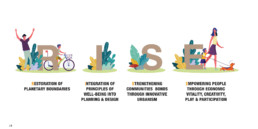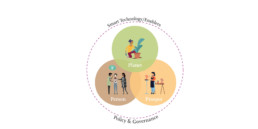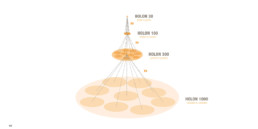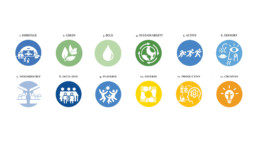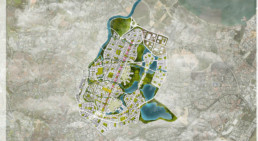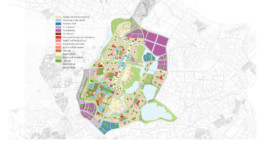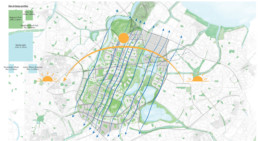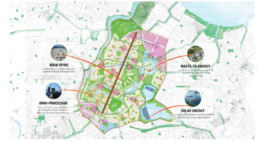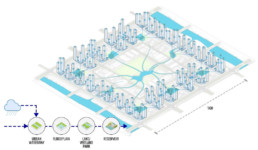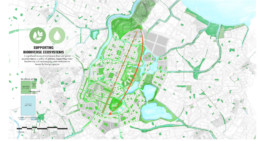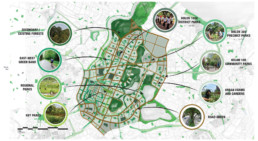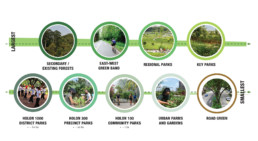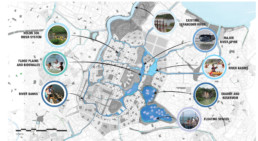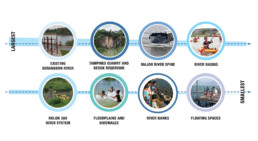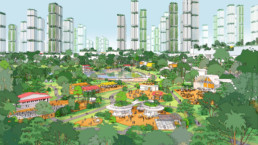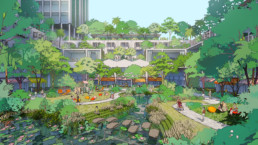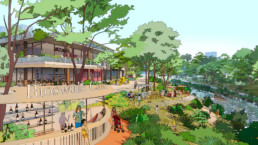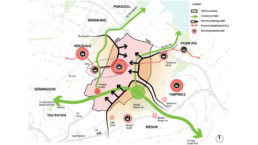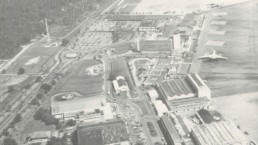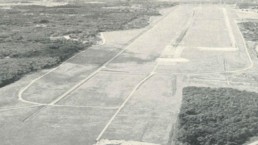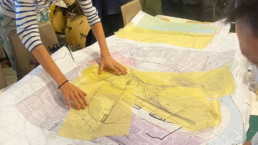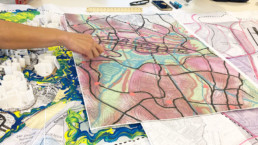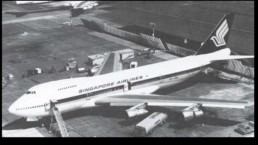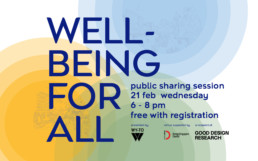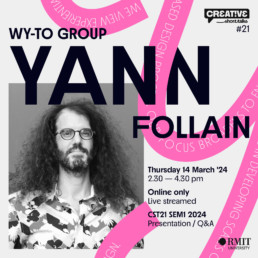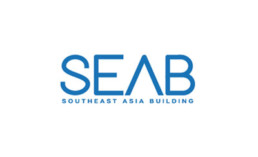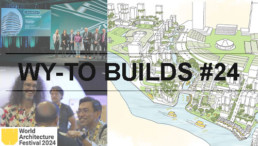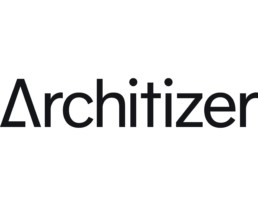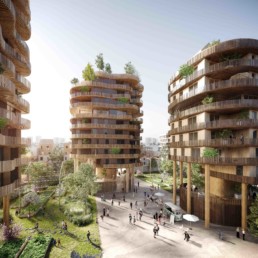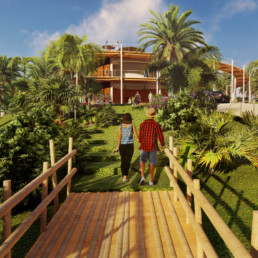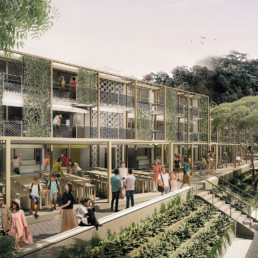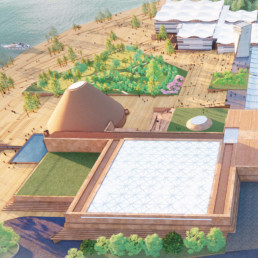Type
URA-SIA-SIP Concept Master Plan &
Urban Design for Paya Lebar Air Base
Programme
Masterplan
Urban Strategy
Biodiversity Strategy
Programming
Location
Paya Lebar, Singapore
Area
1,870 ha
Client
Urban Redevelopment Authority (URA)
Timeline
08/2021 – 07/2022
Partners
ARC Studio Architecture + Urbanism, AECOM Singapore, Spatial Anatomy, Type0 Architecture, Cistri, enCity, LWK + Partners
Team
Yann Follain, Feranda Chua, Fang Yun Koh
PROJECT DEVELOPED THROUGH THE WELL-BEING FRAMEWORK. FIND OUT HOW
“Hap(P)y Lab acts as an integrative laboratory that seeds
the RISE of well-being through innovation and engagement”
The Paya Lebar Air Base Masterplan will be realised in 2050. Our proposal was founded beyond socioeconomic success and environmental resilience. They are focused and founded on happiness and well-being. The concepts of palimpsest and holarchy gave us the framework to develop 12 principles of well-being that address the growth of the masterplan over time and in varying scales. Human scale strategies were considered together with the patterns of spaces for the formation of families, communities and townships. Socio-economic development needs were considered and then integrated with the cognitive-socio-emotional development of the residents. Through the systemically linked macro to micro perspectives guided by the 12 Principles of Well-being, the masterplan promotes a cycle of well-being through the Planet, the Person and Prosperity in Hap(P)y Lab, its neighbour and the rest of Singapore.
The 1,870ha of land is innovated to create a decentralised urban planning framework in Singapore. Optimised to be fully usable, the zoning division is performed to integrate within the envisioned eastern job node, a vibrant mix of programmes and economic streams. The former air base will bring to fruition Smart, Flexible and Diverse spaces through the increase in amenities accessibility, provision of jobs and multi-purposed recreational spaces that includes the proposed 41% Green and Blue networks. Centring every decision is the communication of an inclusive and accessible Hap(P)y Lab that will be received by residents and visitors alike.
With a projection of at least half of Hap(P)y Lab’s energy from renewable resources, both passive and active strategies are planned in sync with the environment. Towers are positioned in the direction of the prevailing winds to naturally cool and ventilate the neighbourhood of an estimated 150,000 homes.
Functioning as the Green and Blue heart of the East, the spine of Hap(P)y Lab is ecologically designed to gradually increase the amounts of green and blues spaces in varying scales and intensities. The new networks are also nature-based infrastructures strategised as a response to the tropical equatorial climate. Created bigger basins hold abundant rainfall during monsoon periods for Hap(P)y Lab’s reuse, while the permeable surfaces assist to reduce the occurrences of floods by managing stormwater runoffs efficiently. Other than bolstering Singapore’s water security, they too benefit the communities. Eg. Wind corridors and fresher air from the increased green carbon sinks. In the long haul, the established Green and Blue ecosystems will mitigate Urban Heat Island effects.
In support of Singapore’s City in Nature goal, new communal networks of parks, nature corridors and walkways, designed to connect present green and blue spaces, will also integrate with the wider surrounding ecosystems. These ecosensitive connections will establish themselves and strengthen existing native biodiversity by encouraging wider resiliency and growth. Linking with existing water bodies (Serangoon River, Tampines Quarry and Bedok Reservoir), Hap(P)y Lab will act as a continuous ecological corridor to contribute back to nature by nurturing new ecosystems and sustaining biodiversity habitats.
Beyond that, the resultant nature-orientated spaces are planned to encourage more social interactivity through recreational options alongside greater nature accessibility for all in nearby neighbourhoods.
*Text also includes extracts from official URA releases (1, 2, 3)
“The new Paya Lebar town, when ready, could serve as a regional centre akin to nodes such as Woodlands, Tampines, Punggol Digital District and one-north. These nodes bring offices closer to homes and out of the Central Business District by offering a mix of work, residential and recreational spaces …”
– Hwang Yu-Ning, Former Deputy CEO and Chief Planner of Urban Redevelopment Authority (Extracted from The Straits Times, 2022)
